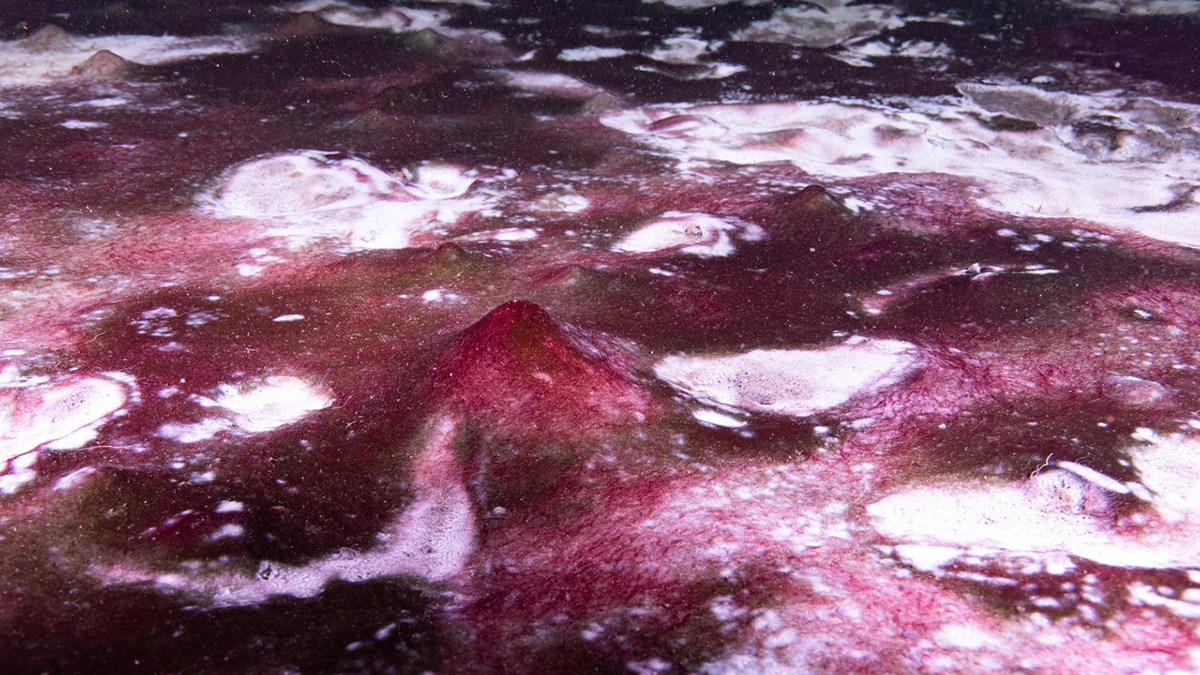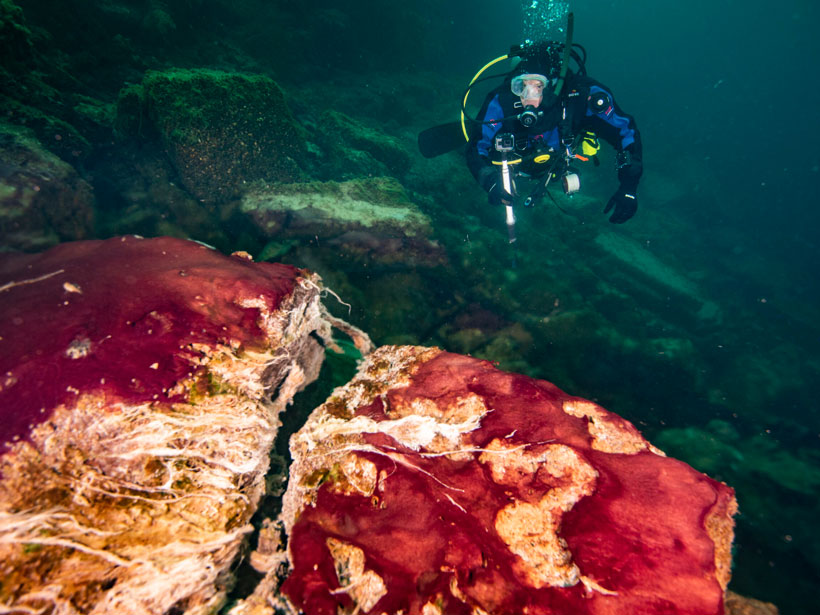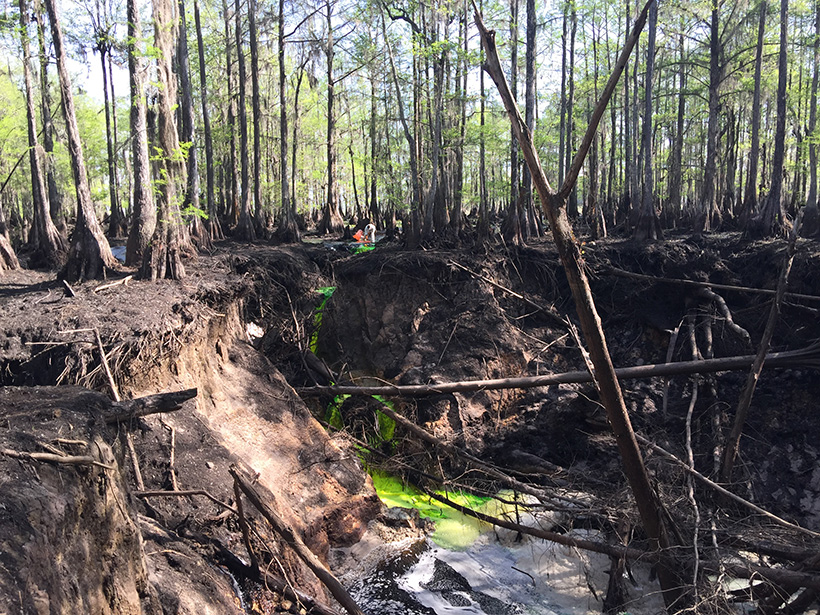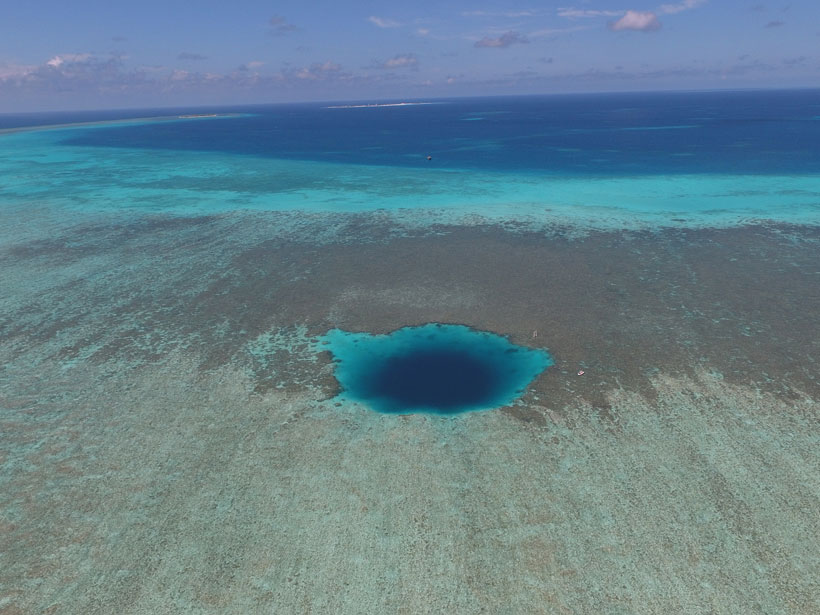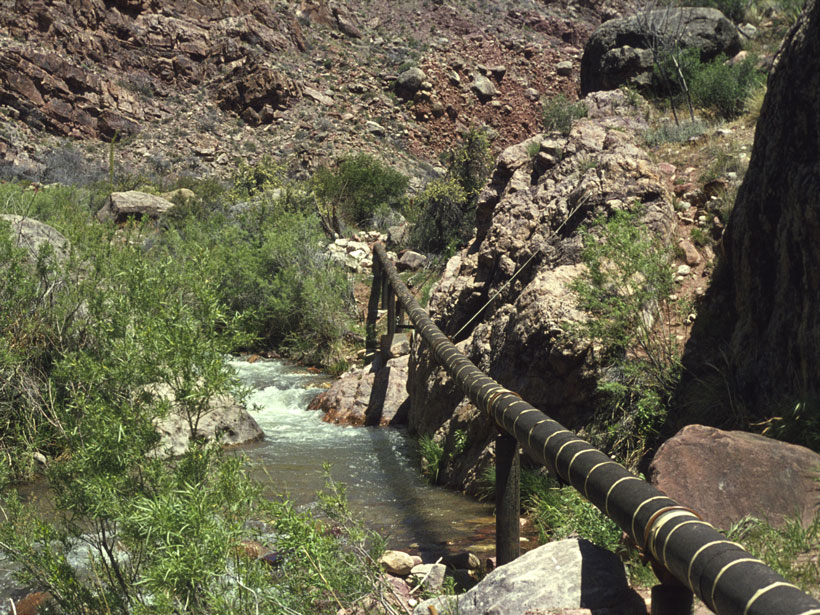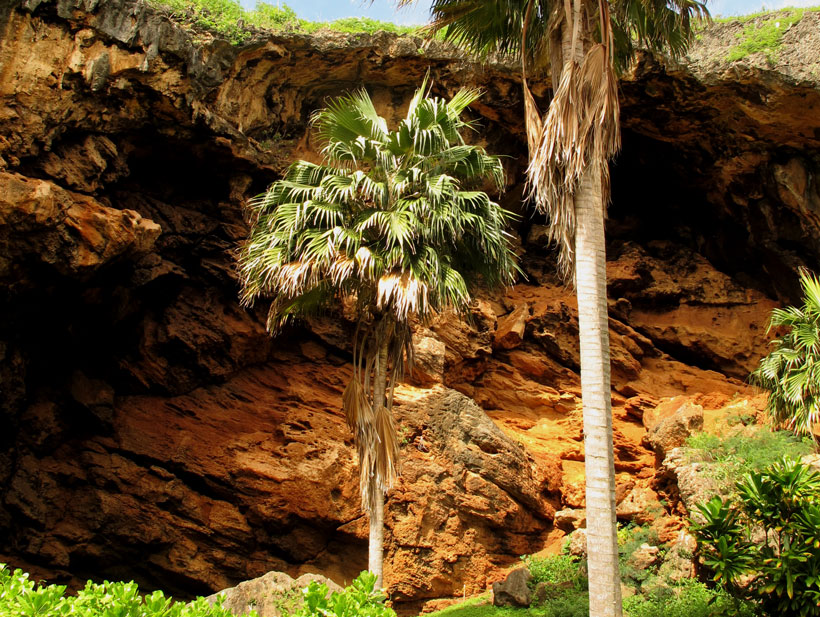Comprising diverse groups of microbes, isolated but globally scattered mat ecosystems like those in Lake Huron may be analogues of life on early Earth and in other exotic environs.
sinkholes
Where the Ground Gives Way
Sinkholes are a significant hazard, but where are they most likely to happen? A new study identifies hot spots in the contiguous United States.
Longer Days Likely Boosted Earth’s Early Oxygen
Microbial mats in a Lake Huron sinkhole, combined with modeling work, suggest that the changing length of Earth’s day could have played a key role in oxygenating the atmosphere.
Dyes and Isotopes Track Groundwater from Sink to Spring
The hydraulic connection between a sinkhole and a natural spring—the longest and largest yet documented—could help reduce the guesswork in mapping karst aquifers.
Early Inhabitants of the Bahamas Radically Altered the Environment
Clues in sediments show that once humans arrived on Great Abaco Island, they hunted large reptiles to extinction and burned the old hardwoods and palms, leading to new pine- and mangrove-dominated lands.
Severe Cyclones May Have Played a Role in the Maya Collapse
Sediment cores from the Great Blue Hole reveal that a series of extreme storms hit the region after 900. The storms may have irreparably damaged an already stressed Maya population.
Carbon Cycling in the World’s Deepest Blue Hole
Scientists find new extremes as they research carbon cycling in the Yongle blue hole.
Tracking the Grand Canyon’s Mysterious Springs
Improved modeling will help protect a crucial drinking water source for both rims of Grand Canyon National Park.
Subsurface Imaging Sheds Light on Dead Sea Sinkholes
Using seismic waves, researchers study sediment layering near the Dead Sea to reveal how the area’s numerous sinkholes form.
Tracking Down a Subduction Zone Earthquake
Researchers use computer simulations to find the date and earthquake source of an ancient tsunami that deposited sediment in a Hawaii sinkhole.

